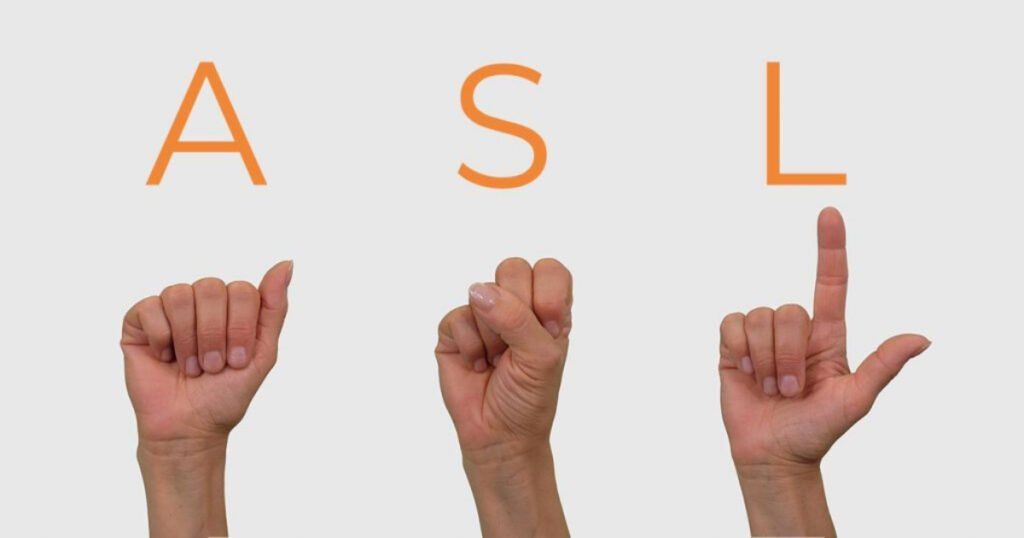Deaf and hard-of-hearing people in the United States and throughout the world communicate with one another using American Sign Language (ASL), a visually rich and expressive visual language. Demand for ASL education has been rising as more individuals understand the need of making communication more accessible to all. Study in (ASL) American Sign Language can be a gratifying experience for people of various hearing levels, and we’ll dive into the ins and outs of this fascinating field in this post.
Understanding ASL: A Unique Language
What is American Sign Language?
The grammar, syntax, and organisation of American Sign Language are distinct from those of spoken English. It’s a full and vivid language because of the reliance on gestures, emotions, and body language to communicate meaning. Because of its visual nature, ASL is a vital means of communication for the deaf and hard of hearing.
The Cultural Aspect of ASL
The Deaf community’s rich culture and history are reflected in American Sign Language (ASL), which serves as a primary means of communication. Learning ASL provides a window into the rich history, artistic expression, and cultural practises of the Deaf community.
The Benefits of Learning ASL
Enhanced Communication
Learning ASL opens up new channels of communication by bridging the gap between the hearing and the deaf populations. It improves the ability of the deaf to communicate with the hearing and vice versa, leading to a more accepting and interconnected society.
Career Opportunities
Having ASL proficiency can lead to many different job opportunities. Experts in education, healthcare, and social work are needed who can successfully interact with the Deaf community. Earning a living as a sign language interpreter, educator, or advocate for the Deaf community is possible with ASL fluency.
Cognitive and Linguistic Advantages
The cognitive benefits of learning ASL have been well-documented. Studies have indicated that learning a second language, especially one that emphasises visuals and space like American Sign Language (ASL), can improve cognitive functions including memory, problem solving, and task switching.
Challenges in Learning ASL
Spatial and Conceptual Shifts
Those learning American Sign Language (ASL), especially those coming from a background in spoken languages, may find it difficult to get used to the language’s spatial emphasis. Learning the language necessitates switching from a sequential to a visual-spatial mode of thought.
Grammar and Structure
The grammar and sentence structure of ASL are very different from those of English. Learning to pick up on these subtleties might be difficult for beginners, but it’s necessary for true fluency.
Cultural Sensitivity
Students of ASL would do well to keep in mind that the language has deep cultural roots within the Deaf community. Knowing the culture, history, and norms of the Deaf community is essential.
Tips for Successful ASL Learning
Immerse Yourself in the Deaf Community
You may learn a lot about the Deaf language and culture by participating in local events, seminars, and online communities. Listening in on other people’s discussions might help you remember information and make new connections.
Practice Regularly
The best way to become fluent in Study in ASL is to practise the language regularly. Signing abilities and self-assurance can be greatly improved via daily practise with native or expert signers.
Take ASL Classes
Classes in American Sign Language (ASL), whether in-person or online, provide students an organised learning environment and the support of knowledgeable teachers. They provide a thorough and robust introduction to the language.
The Rewarding Journey of ASL Mastery
Increased Empathy and Understanding
Learning ASL helps you better appreciate the difficulties experienced by the Deaf population. This increased capacity for sympathy contributes to the dismantling of prejudice and the growth of a more accepting society.
Building Lifelong Connections
The ASL learning community is kind and welcoming. You make lifelong friends and allies within the Deaf community, interpreters, and other students.
Personal Growth and Fulfillment
Learning ASL is a huge step forward in one’s development as a person. Knowing you can connect with individuals from all walks of life and make the world a more welcoming place is really rewarding.
Conclusion
Study in ASL is a life-changing experience that may lead to new professional opportunities, deeper personal insights, and deeper connections to others. The benefits and rewards of learning ASL much surpass the effort required to do so. When you learn ASL, you join an important movement towards more accessible and inclusive communication.


